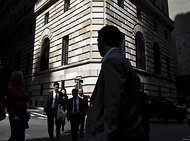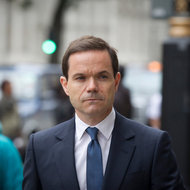Now A.I.G. wants to be able to sue other banks that sold it mortgage-backed securities that plunged in value during the financial crisis. It has not said which banks, but possibilities include Deutsche Bank, Goldman Sachs and JPMorgan Chase.
But to sue, A.I.G. first must win a court fight with an entity controlled by the Federal Reserve Bank of New York, which the insurer says is blocking its efforts to pursue the banks that caused it financial harm.
The dispute illustrates the web of financial instruments that A.I.G. and the federal government became tangled in as the insurer nearly collapsed in 2008 and required a vast taxpayer bailout. It also shows the complexity of apportioning blame, five years after the financial crisis, and making wrongdoers pay for their share of the harm.
According to a lawsuit filed Friday, A.I.G. is seeking a declaration from a New York state judge that it has the right to pursue “billions of dollars of fraud and other tort claims that exist against numerous financial institutions,” even though Fed officials have said A.I.G. gave up that right.
“If I were the general counsel of A.I.G., I would seek this kind of declaratory judgment,” said Henry T. C. Hu, a former regulator who is now a professor at the University of Texas School of Law. “I don’t know whether I’d win, but it’s certainly worth trying.”
Much of A.I.G.’s rescue was needed because it didn’t have money in 2008 to cover guarantees that it sold banks in case the complex securities in their portfolios defaulted. But the latest dispute centers on a less familiar part of the bailout — the part in which reserves were removed from A.I.G.’s life insurance units and replaced with what turned out to be troubled mortgage securities.
The securitized housing loans lost value so fast when the bubble burst that some of A.I.G.’s life insurers risked being shut down by state insurance regulators. The Fed stepped in instead, and A.I.G.’s current lawsuit centers on the relationship that formed between the insurer and its rescuer as a result.
The Fed paid about $44 billion to extricate A.I.G.’s life insurance units from soured trades, and set up a special entity, Maiden Lane II, to buy the plunging mortgage securities for $20.8 billion. Those securities had an original face value of $39.3 billion.
Maiden Lane II is the sole defendant in A.I.G.’s lawsuit. The complaint says that at the moment Maiden Lane II bought the securities, it locked the insurance units into an $18 billion loss — the difference between the securities’ face value and their price in late 2008, arguably the bottom of the market. A.I.G. attributes a large chunk of its losses to the mortgage securities that it bought from Bank of America. It sued the bank for $10 billion in August 2011.
But one of Bank of America’s defenses is that A.I.G. lacks standing, having given its litigation rights to Maiden Lane II.
Last month, for instance, two senior Fed officials submitted declarations saying they believed that as part of the sale of assets to Maiden Lane II, A.I.G. had agreed not to go after any of the banks.
That prompted A.I.G. to file its suit, arguing that when it sold the tainted assets to Maiden Lane II, it did yield some litigation rights, but not the ones giving it the right to bring fraud complaints against the banks that put the securities together.
A.I.G. said those banks had misled its life insurance and money management businesses regarding the quality of the securities, and “obtained artificially high credit ratings” so the securities would pass the life insurers’ investment rules.
A.I.G.’s lawsuit is separate from one that until late last week it considered joining, which argued that the New York Fed acted unconstitutionally during the bailout, harming the insurer’s shareholders.
Article source: http://www.nytimes.com/2013/01/16/business/aig-seeks-ability-to-sue-more-banks-over-mortgage-securities.html?partner=rss&emc=rss


